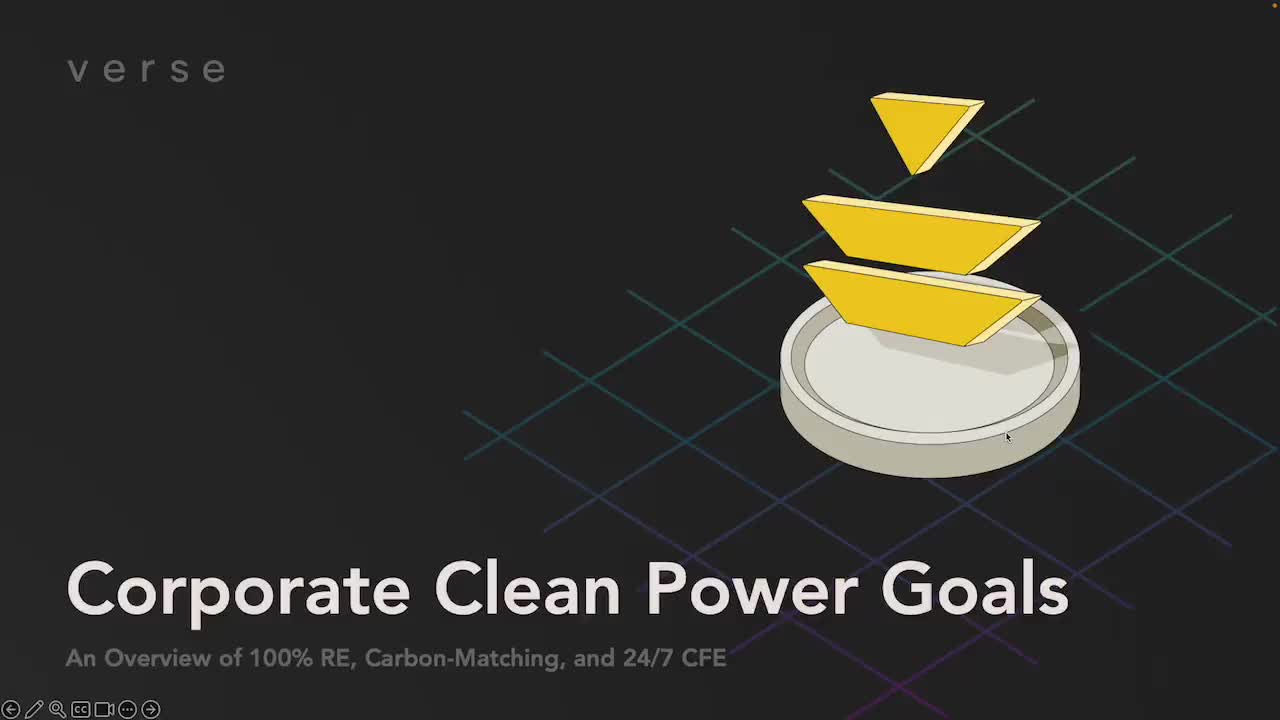What Is a Virtual Power Purchase Agreement?
If you’re at all involved in corporate clean energy or sustainability, you may have heard of a mechanism called a virtual power purchase agreement. But what does it entail?
A virtual power purchase agreement (vPPA) is a financial contract between a renewable energy generator (the seller) and an organization or corporation (the buyer). The PPA is “virtual” because the energy generated by the renewable resource is not delivered to the buyer, but rather sold into the local wholesale electricity market.
Click the image below to watch a quick video or read the blog below.
Virtual Power Purchase Agreement Cash Flows
In the contract, the buyer and seller agree upon a fixed price for electricity generated by the renewable resource, known as the strike price. The buyer pays the seller the fixed strike price for clean energy.
The seller delivers clean energy to the local wholesale market at the market price, which can vary by the hour and sometimes even more frequently. The seller then sends the buyer the market price. But because the wholesale market is always moving, the market price and strike price often differ.
When that happens, the seller may owe the buyer money, or vice versa. The two parties settle the difference every month with what is known as a settlement payment.
For instance, if the seller receives $36/MWh from the wholesale market but has a strike price with the buyer of $44/MWh, the buyer would send the seller an $8/MWh settlement payment. Conversely, if the market price is $54/MWh, and the strike price is $44/MWh, the seller would send the buyer a $10/MWh settlement payment.
This setup ensures that the renewable energy seller receives a predictable revenue stream while the buyer receives a financial hedge for its energy costs.
REC Flows
In addition to the cash flows, there is a flow of renewable energy credits, or RECs, associated with the renewable generation. The seller submits meter data from the renewable energy project to a certifying body to demonstrate they’ve produced clean energy. The certifier confirms the data’s validity and eligibility and sends RECs to the seller’s account, which the seller can then transfer to the buyer’s account.
Once the RECs are transferred, the buyer can use them to meet renewable energy goals, comply with regulatory requirements, or make environmental claims about their energy consumption.
To Sum Up….
To recap:
- 1. The seller enters a financial contract with the buyer for clean electricity at a fixed price.
- 2. The seller produces renewable electricity and earns RECs for the energy produced.
- 3. The seller sells the electricity into the grid at the market price.
- 4. Based on the difference between the market price and the contracted fixed price, the buyer pays the seller or vice versa.
- 5. The seller transfers RECs to the buyer, enabling the buyer to claim the renewable energy benefits.
Virtual power purchase agreements allow corporations and organizations to support renewable energy development, achieve sustainability goals, and manage energy cost risks, while renewable energy developers secure predictable revenue streams that allow them to finance and build new clean energy projects.
Verse uses sophisticated software and expert services to empower corporate clean energy buyers to plan, transact, and manage clean energy, including virtual power purchase agreements. We help you determine the right clean energy goal for your organization and provide an optimal roadmap to achieve it. Contact us to learn how we can make the process fast, easy, and affordable!












